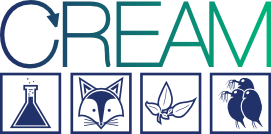Reading University is ranked as one of the UK’s 10 most research-intensive universities and as one of the top 200 universities in the world. Established in 1926 it is particularly known for its work in the sciences relating to Agriculture. The School of Biological Sciences is one of the larger such Schools in the UK and has particular strengths in quantitative biology. It offers the benefits of a modern multi-disciplinary approach to projects supported by considerable recent investment in the field. You can find out more about what it is like to be a postgrad in the department by clicking here.
Richard M. Sibly has been Professor since 1992 and is a member of the Quantitative Biology and Applied Statistics section. He has worked widely within ecology and current themes include population risk assessment of both vertebrates and invertebrates. He is coauthor of the best selling textbook ‘Principles of Ecotoxicology’ and has published over 170 articles and has been awarded the Scientific Medal of the Zoological Society. He is a frequent contributer to international workshops attempting to resolve questions about how to protect populations, most recently the US Environmental Protect Agency (June 2008). As a founding of the Centre for Integrated Population Ecology he has been working intensively on Individual Based Models for several years. For more information click here
– Forbes, V.E., Calow, P., Sibly, R.M. 2008. The extrapolation problem and how population modeling can help. Environmental Toxicology and Chemistry, 27, 1987-1994.
– Sibly, R.M., Barker, D., Denham, M.C., Hone, J. Pagel, M. (2005) On the regulation of populations of Mammals, Birds, Fish and Insects. Science, 309, 607-610.
– Sibly, R.M., Akçakaya, H.R., Topping, C.J., O’Connor, R.J. (2005) Population-level assessment of risks of pesticides to birds and mammals in the UK. Ecotoxicology, 14, 863-876.
– Sibly, R.M., Nabe-Nielsen. J., Forchhammer, M.C., Forbes, V.E., Topping, C.J. (2009). The effects of spatial and temporal heterogeneity on the population dynamics of four animal species in a Danish landscape. BMC Ecology, 9:18 doi:10.1186/1472-6785-9-18. Click here
CREAM projects hosted by the University of Reading:

